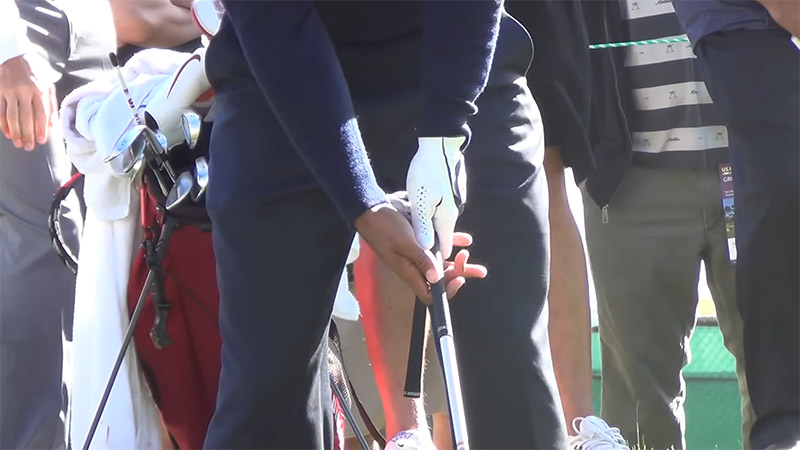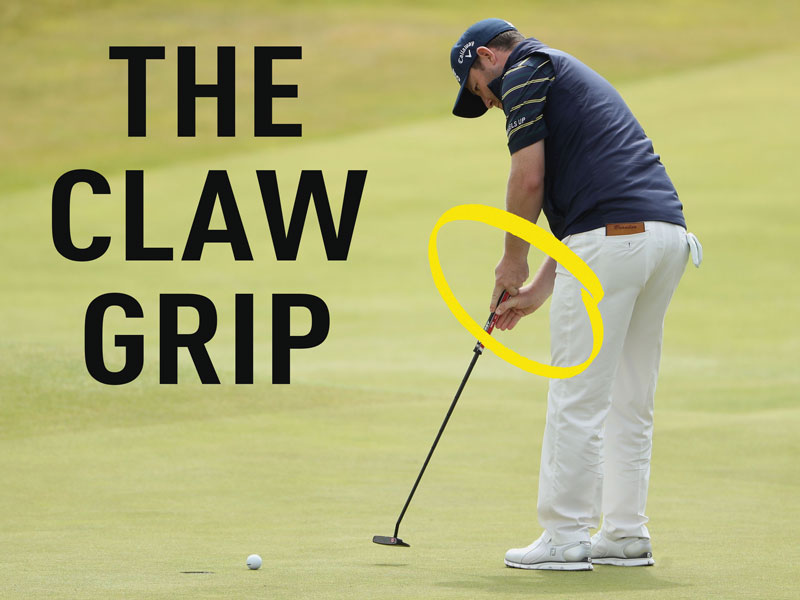Uncategorized
The Secrets Behind Tiger Woods Putting Grip: A Comprehensive Explanation
Few names in the world of golf evoke as much reverence as Tiger Woods, and his putting prowess is a substantial part of his legendary status. The secret to his remarkable success on the greens lies in the subtleties of his putting grip. In this exploration, we delve deep into the artistry of Tiger Woods putting grip, uncovering its evolution, its scientific underpinnings, and its role in controlling the speed of his putts. Whether you’re a seasoned golfer looking to refine your skills or a newcomer eager to grasp the intricacies of the sport, understanding the essence of Tiger Woods putting grip can undoubtedly elevate your game.
1. Explaining Tiger Woods Putting Grip
Tiger Woods putting grip is a masterful technique known as the “reverse overlap grip“. In this grip, Woods expertly overlaps the index finger of his top hand over two fingers on his bottom hand. What sets this grip apart is its stark departure from the traditional overlap grip commonly used by many golfers for full golf swings. While the reverse overlap grip is widespread, it is in the realm of putting that it truly shines.
This technique involves positioning the putter grip along the palms of the hands, with the top hand’s index finger overlapping the pinky and ring fingers of the lower hand. The term “reverse overlap” derives from the fact that it reverses the typical overlap grip utilized in full swings with the clubs in the bag.

The significance of Tiger Woods’ reverse overlap putting grip lies in its widespread adoption among both amateur and professional golfers. It has become the most prevalent putting grip in the sport, far surpassing alternatives like the interlocking putter grip or the claw grip.
Throughout his illustrious career, Tiger Woods has remained loyal to the reverse overlap grip, showcasing its effectiveness. This grip has served as the bedrock of his putting prowess, contributing significantly to his remarkable achievements, including 110 wins, including 15 major championships. It highlights the enduring power of this technique as a foundation for precision and control on the greens.
2. The Evolution of Tiger Woods Putting Grip
To truly fathom the evolution of Tiger Woods putting grip, it’s imperative to delve into its remarkable journey throughout his illustrious career. Woods’ adaptability and relentless pursuit of perfection have prompted substantial alterations in his grip technique, unveiling fresh dimensions of his putting mastery.
2.1 The Early Era: The Cross-Handed Technique
During his formative years, Tiger Woods wholeheartedly embraced the cross-handed technique, where his left hand found its place beneath the right on the club. This decision allowed him to nurture the iconic pendulum-like stroke that would ultimately become synonymous with his putting brilliance.

2.2 The Golden Epoch: The Conventional Reverse Overlap Style
As Woods ascended to the upper echelons of professional golf, he transitioned toward the more orthodox reverse overlap style. In this adaptation, the index finger of his left hand overlapped the fingers of his right. This pivotal shift bestowed upon him heightened stability, control, and unparalleled consistency in his putting stroke, laying the foundation for numerous victories and accolades.

2.3 The Resurgence: The Claw Grip
Amidst a backdrop of injuries and personal trials, Woods embarked on an intriguing experiment by adopting the claw grip. This unconventional approach witnessed his right hand adopting a pencil-like grip, forming a distinctive ‘V’ shape with his thumb and index finger. The claw grip’s capacity to alleviate tension in his right hand and arm provided Woods with a more relaxed and fluid putting stroke during this chapter of his remarkable career.

3. The Science Behind Tiger Woods Putting Grip
The science behind Tiger Woods putting grip unveils a carefully crafted blend of elements that underpin its remarkable effectiveness. Four fundamental factors—light touch, balanced setup, pendulum stroke, and laser-like focus—contribute to Woods’ unparalleled control and consistency on the greens.
3.1. How to do it
Understanding the reverse overlap grip’s mechanics provides further insight into its effectiveness. By gripping the putter halfway down with the right hand, running it down the palm, and placing the left hand above the right, Woods ensures both hands work harmoniously. The left index finger overlapping the right hand’s pinky and ring fingers prevents unwanted hand rolling, enhancing grip security and control throughout the putting stroke. This grip technique, combined with the aforementioned elements, contributes to Woods’ remarkable speed control and distance consistency on the greens, setting him apart as a putting maestro in the world of golf.
3.2. The Light Touch
Tiger Woods putting grip is renowned for its incredibly light pressure. By delicately holding the club, he enhances his feel and control, resulting in a smoother and more dependable stroke. Emulating this feature involves avoiding an overly tight grip, instead focusing on maintaining uniform pressure throughout the stroke.
3.3. The Balanced Setup
Woods’ setup is a model of balance and athleticism. With feet shoulder-width apart and weight evenly distributed, he establishes a rock-solid foundation, ensuring stability during the stroke. Mimicking this balanced approach can significantly enhance your putting prospects.
3.4. The Pendulum Stroke
At the heart of Woods’ putting success lies the pendulum-like stroke. With locked wrists and a shoulder-driven motion, he produces a rhythmic and consistent stroke. To replicate this stroke, prioritize a stable lower body and let your shoulders take charge.
3.5. The Laser-Like Focus
Woods’ unwavering concentration is a cornerstone of his putting prowess. He immerses himself fully in his routine, blocking out distractions while visualizing success. Cultivating such focus can substantially elevate your putting performance.
4. The Importance in Controlling Your Speed
Tiger Woods putting grip, particularly his use of the reverse overlap technique, plays a pivotal role in his ability to control the speed of his putts with remarkable precision. Here’s how his grip aids in speed control.
4.1 Light Touch
Woods is known for his delicate grip pressure, allowing him to have a keen sense of how much force he needs to apply to the putt. By not squeezing the putter tightly, he maintains the necessary sensitivity in his hands to gauge the speed required for each putt. A light grip promotes better feel, which is essential for controlling the distance the ball travels.
4.2 Stability and Consistency
The reverse overlap grip provides stability and consistency in his putting stroke. With the index finger of his top hand (left hand as he putts right-handed) overlapping the lower hand’s fingers, he creates a secure and unified grip. This stability ensures that the putter face stays square to the target line throughout the stroke, reducing the chance of mishits that could affect speed.
4.3 Muscle Memory
Through years of using the same grip and stroke, Woods has developed muscle memory for different putt lengths. This muscle memory enables him to have an innate sense of how far back and through to take the putter for various distances, enhancing his speed control.
4.4 Practice and Precision
Woods’ relentless practice regimen hones his ability to control putt speed. He dedicates countless hours on the practice green, working on putts from various distances and slopes. This commitment sharpens his feel for the greens and helps him consistently judge the speed required for each putt.
Tiger Woods putting grip serves as the foundation for his exceptional speed control on the greens.
5. Conclusion
As we conclude this journey through the world of Tiger Woods putting grip, remember that mastering the nuances of this fundamental technique can be your gateway to improving your performance on the golf course. The science behind his grip, its evolution, and its role in controlling putt speed all contribute to his legendary putting success. So, the next time you’re on the green, consider the lessons from Tiger’s grip. And if you’re hungry for more golf insights and techniques, don’t forget to visit GolfBiz’s blog, where you’ll find a treasure trove of knowledge to help you on your golfing journey.


Pingback: Anonymous